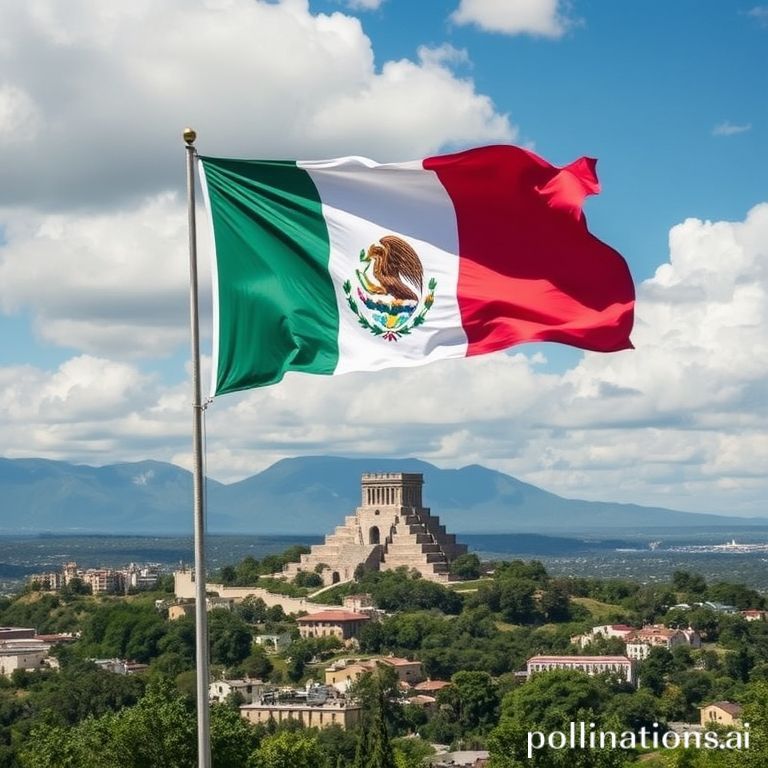The Mexican flag, a vibrant tricolor of green, white, and red, is more than just a national symbol; it’s a powerful representation of Mexico’s history, its struggles, and its unwavering hope for the future. Every color, every emblem, tells a story deeply intertwined with the nation’s identity. Understanding the symbolism woven into its fabric provides a fascinating glimpse into the heart and soul of Mexico.
From its initial design to its modern iteration, the Mexican flag has undergone significant transformations, each reflecting pivotal moments in the country’s evolution. Let’s delve into the captivating story behind this iconic banner and uncover the rich symbolism it holds.
The Colors of the Mexican Flag: Meaning and Symbolism
The three colors of the Mexican flag – green, white, and red – each carry profound meaning, representing core values and historical aspirations. However, the interpretation of these colors has evolved over time, adding layers of complexity to their symbolism.
Green: Hope and Independence
Originally, the green stripe represented independence from Spain. Today, it more commonly symbolizes hope and the fertile lands of Mexico, promising a prosperous future for its people.
White: Purity and Unity
The white stripe initially stood for the purity of the Catholic faith, a significant influence in Mexico’s history. Today, it signifies unity among Mexicans and the nation’s commitment to peace and honesty.
Red: Blood and Patriotism
The red stripe originally represented the union between the insurgents and the Spanish, but it now signifies the blood shed by the nation’s heroes in the fight for independence. It also embodies the courage, strength, and patriotism of the Mexican people.
The Coat of Arms: The Eagle, Serpent, and Nopal
At the center of the white stripe lies the Mexican coat of arms, a powerful emblem rooted in Aztec legend. This intricate design depicts a golden eagle devouring a serpent while perched on a nopal cactus, a prickly pear cactus native to Mexico.
The Aztec Legend
According to Aztec mythology, the god Huitzilopochtli told the people to build their capital city where they found an eagle devouring a serpent on a nopal cactus. This vision led them to the island of Tenochtitlan in Lake Texcoco, where they founded their great city, which is now Mexico City.
Symbolism of the Elements
- The Eagle: Represents the sun, strength, and victory. In Aztec cosmology, the eagle was a symbol of power and the heavens.
- The Serpent: Represents the earth and fertility. It also symbolizes knowledge and wisdom.
- The Nopal Cactus: Represents life, resilience, and the heart of Mexico. The cactus growing out of a stone symbolizes the founding of Tenochtitlan on seemingly barren land.
Evolution of the Mexican Flag Through History
The Mexican flag has undergone several changes throughout its history, reflecting the country’s turbulent journey and evolving national identity.
Early Flags of Independence
During the Mexican War of Independence (1810-1821), various flags were used by the insurgents, often featuring religious symbols or variations of the colors green, white, and red.
The Flag of the First Mexican Empire (1821-1823)
After achieving independence, the first official flag of Mexico was adopted, featuring the three colors arranged diagonally with a crown in the center, symbolizing the monarchy under Emperor Agustín de Iturbide.
The Second Federal Republic and Beyond
With the establishment of the Second Federal Republic in 1823, the flag was modified to resemble the modern design, with the colors arranged vertically and the coat of arms placed in the center of the white stripe. The design has been refined over the years, but the core elements have remained consistent.
The Modern Flag
The current version of the Mexican flag was officially adopted on September 16, 1968, though similar versions had been in use for many years prior. Small adjustments have been made to the coat of arms, but the overall design remains a powerful and enduring symbol of Mexico.
Displaying the Mexican Flag with Respect
The Mexican flag is treated with great reverence in Mexico. There are specific protocols for its display and handling. It is often flown during national holidays, government events, and public ceremonies. When displayed, it should be given a position of honor and respect. It is also important to note that damaging or disrespecting the flag is considered a serious offense in Mexico.
Conclusion
The Mexican flag is far more than just a piece of cloth; it’s a powerful symbol of national identity, history, and hope. Each color and emblem tells a story of struggle, resilience, and the unwavering spirit of the Mexican people. Understanding the rich symbolism embedded within its design allows for a deeper appreciation of Mexico’s culture and heritage. The story of the Mexican flag is a story of Mexico itself, a vibrant tapestry woven with threads of independence, unity, and enduring national pride.
If you enjoyed this article, don’t forget to explore more inspiring stories on Life in Mexico!
IMAGE: A vibrant photograph of the Mexican flag waving proudly against a clear blue sky. The colors are bright and saturated, with the golden eagle and serpent clearly visible on the coat of arms. The mood is patriotic and uplifting, capturing the spirit of Mexico. The style is realistic and detailed, showcasing the texture of the fabric and the intricate details of the emblem.


